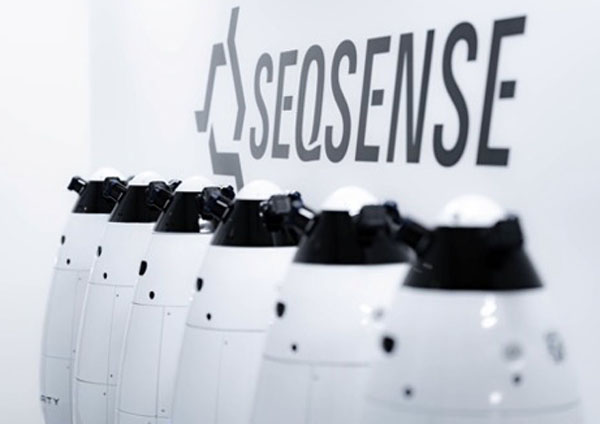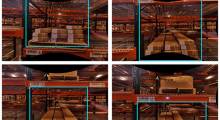The working population of Japan will decrease by 30% in the next 30 years, according to Japan's National Institute of Population and Social Security Research. The country's rapidly aging population is causing a shortage of labor in the security space, among others. SEQSENSE aims to solve this challenge by providing security services with autonomous robots.
The Tokyo-based startup has developed the SQ-2 intelligent security robot. It can navigate inside buildings with a pre-created map of each floor. The mobile robot can also communicate with elevators to patrol multiple floors.
Using autonomous robots for security offers several advantages. For example, surveillance cameras are often used for building security. However, such cameras can have blind spots, and setting up additional cameras takes cost and time.
In contrast, the SQ-2 robot can patrols an entire building by taking an elevator, and security guards can choose routes that reduce or eliminate blind spots. In addition, the presence of a physical robot can deter crimes like shoplifting and reduce the need for human guards.
SQ-2 has already been deployed in more than 30 office buildings, shopping malls, and airports in Japan, said SEQSENSE.
AWS adds capabilities to SQ-2 security robot
SEQSENSE said its mobile robot's core technologies include localization, navigation, and 3D mapping using a super-wide field-of-view lidar. The company developed its original sensor to enable the robot to navigate in narrow aisles or crowded environments.
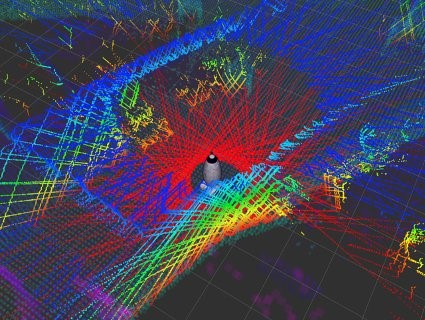
The robot also has a high-resolution camera, a 360-degree camera with three fisheye lenses, microphones, and speakers. Operators can monitor the robot remotely and communicate through it.
SQ-2 can move around for up to six hours with a 1.5-hour charge, and it go back to the charging station by itself, noted SEQSENSE.
In the video at the bottom of this article, learn how SEQSENSE uses Amazon Web Services (AWS) for capabilities such as connectivity, remote operation, and fleet monitoring. Let's dive deep into the robot's architecture and challenges that SEQSENSE solved with services from AWS.
The cloud poses challenges
Developing an autonomous robot is a complex and time-consuming task, requiring a wide variety of technologies from the device to the cloud. For example, securely operating and monitoring robot fleets requires collecting telemetry and video data for real-time dashboards.
Robot developers can improve a robot's software by analyzing the collected data and providing over-the-air (OTA) updates through the cloud.
As a young company, SEQSENSE wants to focus on value differentiation and its core competencies like 3D lidar and navigation. However, a cloud platform is also important for its business because the robot is designed to be operated by human security guards through a Web console.
The startup needed to develop and operate the cloud platform as well as its robots with a limited number of engineers.
Architecture overview
SEQSENSE's robot is always connected to the Internet via 4G cellular connectivity, and SQ-2 sends telemetry and video to the cloud. However, it can operate completely by itself even if it is disconnected.
Security guards and operators can manage robots from the Web console. It shows the status of SQ-2, its position on a map, and video of the robot. Users can command a robot to patrol specific waypoints or go back to its charging station.
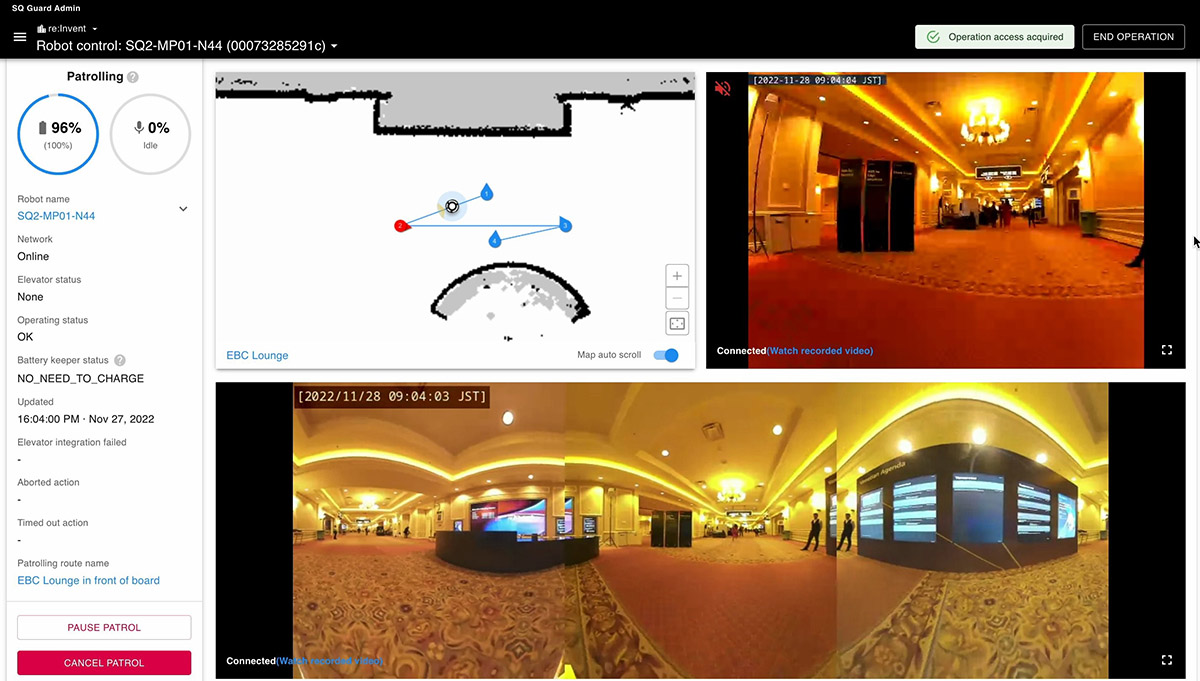
The diagram below shows a simplified architecture of the robot and its cloud applications.
SEQSENSE wanted fully managed services to reduce the cost of oversight infrastructure. It turned to services like AWS IoT Core and Amazon Kinesis Video Streams for ingesting robot data.
As a result, the company develops and manages all of its cloud infrastructure with only four engineers.
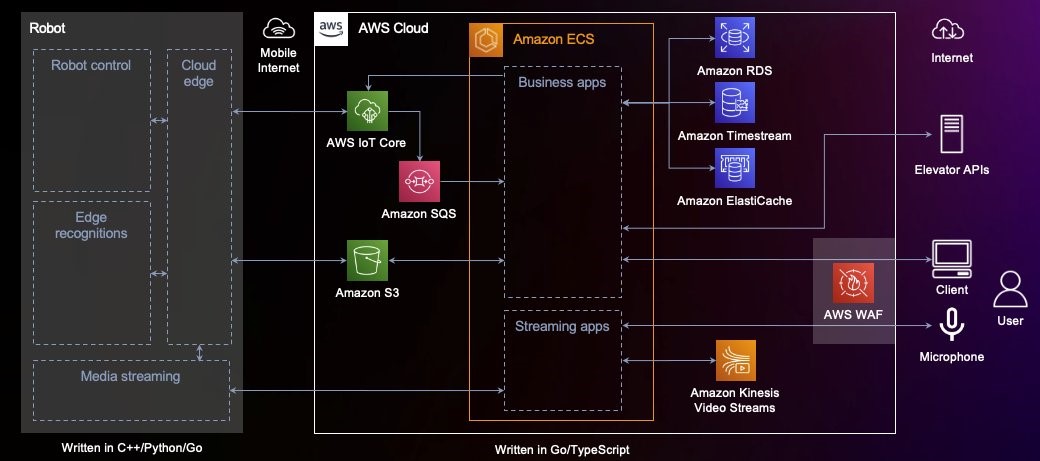
Collecting telemetry
AWS IoT Core collects telemetry from SQ-2. AWS said it designed IoT Core to let Internet of Things (IoT) devices easily and securely connect to cloud and interact with cloud applications.
The data collected from the robot will be stored in multiple database services, depending on the use case. For example, patrol results are stored in Amazon Relational Database Service (Amazon RDS).
The latest robot statuses like operation mode, errors, and battery percentages are stored in Amazon ElastiCache for Redis, and the historical data of robot position is stored in Amazon TimeStream.
SEQSENSE's cloud connectivity software on the edge was written in Golang. The company has developed a library to use AWS IoT Core features from Golang and published it as an open-source software on GitHub.
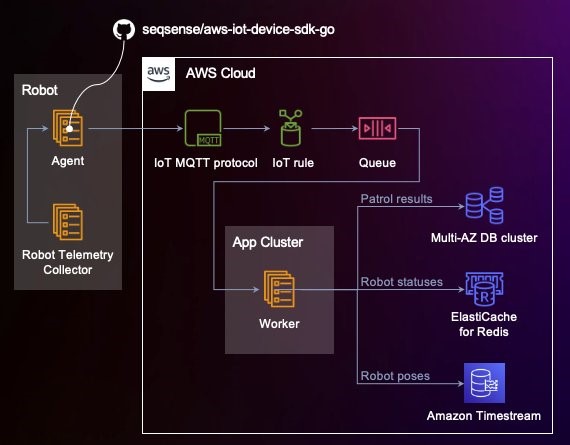
Remote operation
SQ-2 also uses IoT Core for remote operation. Security guards or building facility owners can create a patrol route in their Web consoles and set the routes for each robot.
A robot will usually patrol the building along the specified route. If it found an obstacle on the way to waypoint, it would avoid the obstacle.
However, if it fails to detour and can’t reach to the waypoint, SQ-2 would notify its owner. The owner can skip a waypoint, command the robot to stay, or send it back to the charging station.
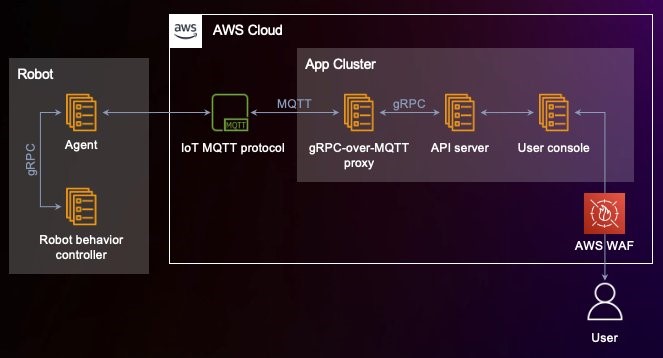
Video streaming and recording
SQ-2 has four cameras, and users can see live and on-demand video from the Web console. The video streamed to the cloud is securely stored into Amazon Kinesis Video Streams for on-demand playback.
Users can easily download or playback the media of a certain period, claimed AWS. SEQSENSE also uses the stored media to improve the robot software. It has developed Kinesis Video Streams Producer and Consumer Library for Golang.
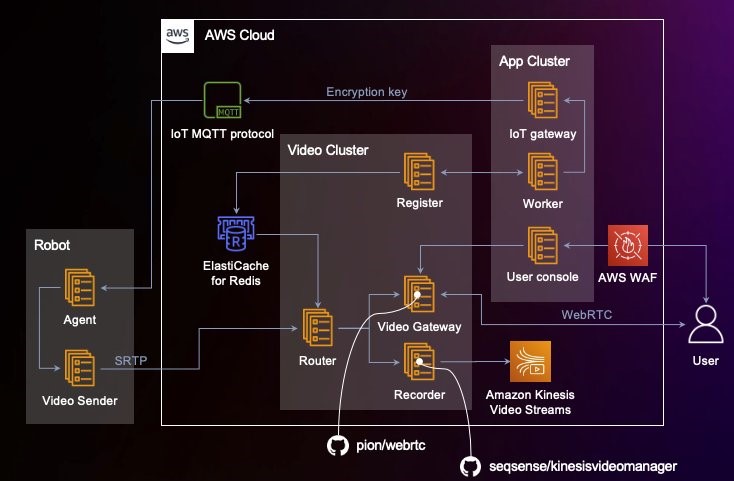
AWS can improve robot ease of use
SEQSENSE aims to solve a shortage of labor in the security space by developing intelligent robots. By using AWS services, the company can make its service reliable and durable, as well as easy to maintain, scale, and extend, according to AWS.
Especially, AWS IoT Core and Amazon Kinesis Video Streams help them easily develop and operate their core features like autonomous patrol and remote monitoring.
AWS Robotics discusses more robotics use cases on its site. To learn more about AWS IoT services and systems, visit AWS IoT or contact the company.

About the author
Yuma Mihira is a senior IoT specialist solutions architect at Amazon Web Services. Based in Japan, he helps customers build IoT system. Prior to AWS, Mihira gained experience in robotics development as a software engineer.
Article topics
Email Sign Up

